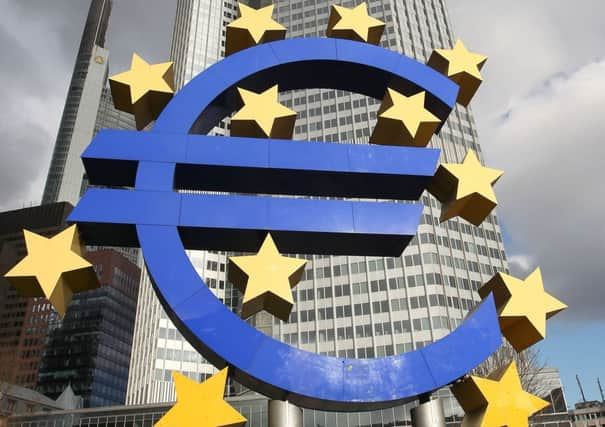Pressure off stimulus as eurozone growth picks up


Gross domestic product grew by 0.3 per cent in the fourth quarter compared with the previous three-month period, according to Eurostat, the European Union’s statistics office. That amounts to an annualised rate of about 1.2 per cent.
The eurozone came out of recession at the beginning of 2013 as it started emerging from a five-year financial crisis, but continues to suffer from unemployment of 12 per cent. A strong euro is still hurting its exporters and governments are more focused on cutting debt than investing.
Advertisement
Hide AdAdvertisement
Hide AdThe fourth-quarter growth – the third consecutive quarter of expansion – beat analysts’ expectations for a rate of 0.2 per cent and eases some of the pressure on the European Central Bank (ECB) president Mario Draghi to loosen its monetary policy further. Some analysts, however, still think the ECB needs to take action in coming months to keep inflation from falling further below its target.
The growth uptick was largely driven by higher-than-expected activity in the bloc’s biggest economies, namely Germany, France and Italy.
Chris Williamson, chief economist at Markit, said the figures added to recent data showing that “the eurozone’s recovery has moved up a gear”.
Italy’s quarterly growth rate of 0.1 per cent marked the country’s first positive growth result since 2011. Germany’s economy grew by 0.4 per cent in the fourth quarter, while France’s expanded by 0.3 per cent.
Growth in the Netherlands was a stronger 0.7 per cent, and the economies in crisis-hit countries like Spain and Portugal also showed new signs of life, growing by 0.3 per cent and 0.4 per cent respectively.
Williamson said: “Not only has the pace of growth picked up to the fastest since the second quarter of 2011, but the recovery is also becoming more broad-based, encompassing core and so-called ‘periphery’ countries alike.”